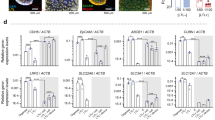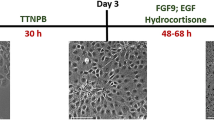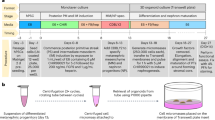Abstract
Proximal tubules energetically internalize and metabolize solutes filtered through glomeruli but are constantly challenged by foreign substances during the lifespan. Thus, it is critical to understand how proximal tubules stay healthy. Here we report a previously unrecognized mechanism of mitotically quiescent proximal tubular epithelial cells for eliminating gold nanoparticles that were endocytosed and even partially transformed into large nanoassemblies inside lysosomes/endosomes. By squeezing ~5 µm balloon-like extrusions through dense microvilli, transporting intact gold-containing endocytic vesicles into the extrusions along with mitochondria or other organelles and pinching the extrusions off the membranes into the lumen, proximal tubular epithelial cells re-eliminated >95% of endocytosed gold nanoparticles from the kidneys into the urine within a month. While this organelle-extrusion mechanism represents a new nanoparticle-elimination route, it is not activated by the gold nanoparticles but is an intrinsic ‘housekeeping’ function of normal proximal tubular epithelial cells, used to remove unwanted cytoplasmic contents and self-renew intracellular organelles without cell division to maintain homoeostasis.
This is a preview of subscription content, access via your institution
Access options
Access Nature and 54 other Nature Portfolio journals
Get Nature+, our best-value online-access subscription
$29.99 / 30 days
cancel any time
Subscribe to this journal
Receive 12 print issues and online access
$259.00 per year
only $21.58 per issue
Buy this article
- Purchase on Springer Link
- Instant access to full article PDF
Prices may be subject to local taxes which are calculated during checkout






Similar content being viewed by others
Data availability
All data from this work are available in the Article and its Supplementary Information. Source data are provided with this paper. Other relevant data are available from the corresponding authors upon reasonable request for research purposes.
References
Hall, J.E. & Hall, M. E. Guyton and Hall Textbook of Medical Physiology (Elsevier Health Sciences, 2010).
Du, B. et al. Glomerular barrier behaves as an atomically precise bandpass filter in a sub-nanometre regime. Nat. Nanotechnol. 12, 1096–1102 (2017).
Zhuo, J. L. & Li, X. C. Proximal nephron. Compr. Physiol. 3, 1079–1123 (2013).
Gudehithlu, K. P., Pegoraro, A. A., Dunea, G., Arruda, J. A. L. & Singh, A. K. Degradation of albumin by the renal proximal tubule cells and the subsequent fate of its fragments. Kidney Int. 65, 2113–2122 (2004).
Sancey, L. et al. Long-term in vivo clearance of gadolinium-based AGuIX nanoparticles and their biocompatibility after systemic injection. ACS Nano 9, 2477–2488 (2015).
Tenten, V. et al. Albumin is recycled from the primary urine by tubular transcytosis. J. Am. Soc. Nephrol. 24, 1966–1980 (2013).
Du, B., Yu, M. & Zheng, J. Transport and interactions of nanoparticles in the kidneys. Nat. Rev. Mater. 3, 358–374 (2018).
Oh, N. & Park, J.-H. Endocytosis and exocytosis of nanoparticles in mammalian cells. Int. J. Nanomed. 9, 51–63 (2014).
Chithrani, B. D. & Chan, W. C. W. Elucidating the mechanism of cellular uptake and removal of protein-coated gold nanoparticles of different sizes and shapes. Nano Lett. 7, 1542–1550 (2007).
Balfourier, A. et al. Unexpected intracellular biodegradation and recrystallization of gold nanoparticles. Proc. Natl Acad. Sci. USA 117, 103–113 (2019).
Kim, C. et al. Regulating exocytosis of nanoparticles via host–guest chemistry. Org. Biomol. Chem. 13, 2474–2479 (2015).
Ho, L. W. C., Yin, B., Dai, G. & Choi, C. H. J. Effect of surface modification with hydrocarbyl groups on the exocytosis of nanoparticles. Biochemistry 60, 1019–1030 (2021).
Ho, L. W. C. et al. Mammalian cells exocytose alkylated gold nanoparticles via extracellular vesicles. ACS Nano 16, 2032–2045 (2022).
Tang, S., Huang, Y. & Zheng, J. Salivary excretion of renal-clearable silver nanoparticles. Angew. Chem. Int. Ed. 59, 19894–19898 (2020).
Soo Choi, H. et al. Renal clearance of quantum dots. Nat. Biotechnol. 25, 1165–1170 (2007).
Christensen, E. I., Rennke, H. G. & Carone, F. A. Renal tubular uptake of protein: effect of molecular charge. Am. J. Physiol. Ren. Physiol. 244, F436–F441 (1983).
Xiao, K. et al. The effect of surface charge on in vivo biodistribution of PEG-oligocholic acid based micellar nanoparticles. Biomaterials 32, 3435–3446 (2011).
Tabata, Y. & Ikada, Y. Effect of the size and surface charge of polymer microspheres on their phagocytosis by macrophage. Biomaterials 9, 356–362 (1988).
Jiang, X., Du, B. & Zheng, J. Glutathione-mediated biotransformation in the liver modulates nanoparticle transport. Nat. Nanotechnol. 14, 874–882 (2019).
Schuh, C. D. et al. Combined structural and functional imaging of the kidney reveals major axial differences in proximal tubule endocytosis. J. Am. Soc. Nephrol. 29, 2696–2712 (2018).
Miller, R. P., Tadagavadi, R. K., Ramesh, G. & Reeves, W. B. Mechanisms of cisplatin nephrotoxicity. Toxins 2, 2490–2518 (2010).
Stamellou, E., Leuchtle, K. & Moeller, M. J. Regenerating tubular epithelial cells of the kidney. Nephrol. Dialysis Transplant. 36, 1968–1975 (2020).
Fujigaki, Y. Different modes of renal proximal tubule regeneration in health and disease. World J. Nephrol. 1, 92–99 (2012).
Fowler, B. A. Ultrastructural evidence for nephropathy induced by long-term exposure to small amounts of methyl mercury. Science 175, 780–781 (1972).
Melentijevic, I. et al. C. elegans neurons jettison protein aggregates and mitochondria under neurotoxic stress. Nature 542, 367–371 (2017).
Moras, M., Lefevre, S. D. & Ostuni, M. A. From erythroblasts to mature red blood cells: organelle clearance in mammals. Front. Physiol. 8, 1076 (2017).
Acknowledgements
We acknowledge the financial support in part from the National Institute of Health (NIH; R01DK124881 (M.Y.), R01DK115986 (J.Z.), R01DK126140 (J.Z.) and R01DK103363 (J.Z.)), National Science Foundation (NSF; 2018188 (J.Z.)), Cancer Prevention Research Institute of Texas (CPRIT; RP200233 (J.Z.)), the University of Texas (UT) at Dallas Office of Research through the Core Facility Voucher Program (award number 11020 to M.Y.) and the Cecil H. and Ida Green Professorship in System Biology (to J.Z.) from the UT Dallas. We also acknowledge the assistance of the UT Southwestern Electron Microscopy Core and the Shared Instrumental Program of NIH (1S10OD021685 (K. Luby-Phelps)). We acknowledge the partial assistance of S. Ahrari at UT Dallas in the synthesis of (−)-AuNPs, and Q. Zhou and S. Li at UT Dallas on some ICP sample preparation. We thank late Dr. Hobson Wildenthal and internal funding support from UT Dallas and K. Luby-Phelps and her staff members at UT Southwestern (UTSW) Medical Center EM core facilities for EM sample preparation; J.-T. Hsieh and his staff members at the UTSW Medical Center for the tissue embedding and providing the HK-2 cell line; G. Meloni and his student R. L. Villones at UT Dallas for providing metallothionein; and Q. Cai at the UTSW Medical Center for her comments on H&E-stained tissue samples.
Author information
Authors and Affiliations
Contributions
J.Z., Y.H. and M.Y. conceived the idea and designed the experiments. Y.H. performed most of the experimental studies and data collection. J.Z. recognized the unique organelle-extrusion process during EM imaging of the PTs with Y.H. and M.Y.; J.Z., Y.H. and M.Y. wrote the manuscript. All authors discussed and commented on the manuscript.
Corresponding authors
Ethics declarations
Competing interests
The authors declare no competing interests.
Peer review
Peer review information
Nature Nanotechnology thanks the anonymous reviewers for their contribution to the peer review of this work.
Additional information
Publisher’s note Springer Nature remains neutral with regard to jurisdictional claims in published maps and institutional affiliations.
Extended data
Extended Data Fig. 1 A schematic summary of substance transport processes carried by proximal tubular epithelial cells (PTECs).
PTECs can secrete substances from the blood into the tubular lumen and the urine through transporter-mediated influx- and efflux-processes (green arrow line), reabsorb substances from the lumen back into the bloodstream through transcytosis or transporter-mediated efflux after lysosomal degradation (yellow arrow line). In addition, this newly discovered organelle extrusion of PTECs represents another route to remove the endocytosed and even biotransformed substances back into the tubular lumen for further renal clearance (red arrow line), along with elimination of other intracellular organelles. Since organelle extrusion also happens in healthy proximal tubules without AuNP injection, the physiological function is believed to self-renew intracellular contents and remove wastes to maintain homeostasis without cell division.
Supplementary information
Supplementary Information
All supplementary figures and Methods.
Supplementary Data
Statistical source data for Supplementary Figs. 1, 3, 9–11, 13, 19, 23, 30 and 32–34.
Source data
Source Data Figs. 2 and 4–6
Statistical source data for Figs. 2 and 4–6.
Rights and permissions
Springer Nature or its licensor (e.g. a society or other partner) holds exclusive rights to this article under a publishing agreement with the author(s) or other rightsholder(s); author self-archiving of the accepted manuscript version of this article is solely governed by the terms of such publishing agreement and applicable law.
About this article
Cite this article
Huang, Y., Yu, M. & Zheng, J. Proximal tubules eliminate endocytosed gold nanoparticles through an organelle-extrusion-mediated self-renewal mechanism. Nat. Nanotechnol. 18, 637–646 (2023). https://doi.org/10.1038/s41565-023-01366-7
Received:
Accepted:
Published:
Issue Date:
DOI: https://doi.org/10.1038/s41565-023-01366-7
This article is cited by
-
Physiological principles underlying the kidney targeting of renal nanomedicines
Nature Reviews Nephrology (2024)
-
Propelling gold nanozymes: catalytic activity and biosensing applications
Analytical and Bioanalytical Chemistry (2024)
-
Biological Interaction and Imaging of Ultrasmall Gold Nanoparticles
Nano-Micro Letters (2024)
-
Transport mechanisms
Nature Nanotechnology (2023)
-
Intermediate filaments associate with aggresome-like structures in proteostressed C. elegans neurons and influence large vesicle extrusions as exophers
Nature Communications (2023)



